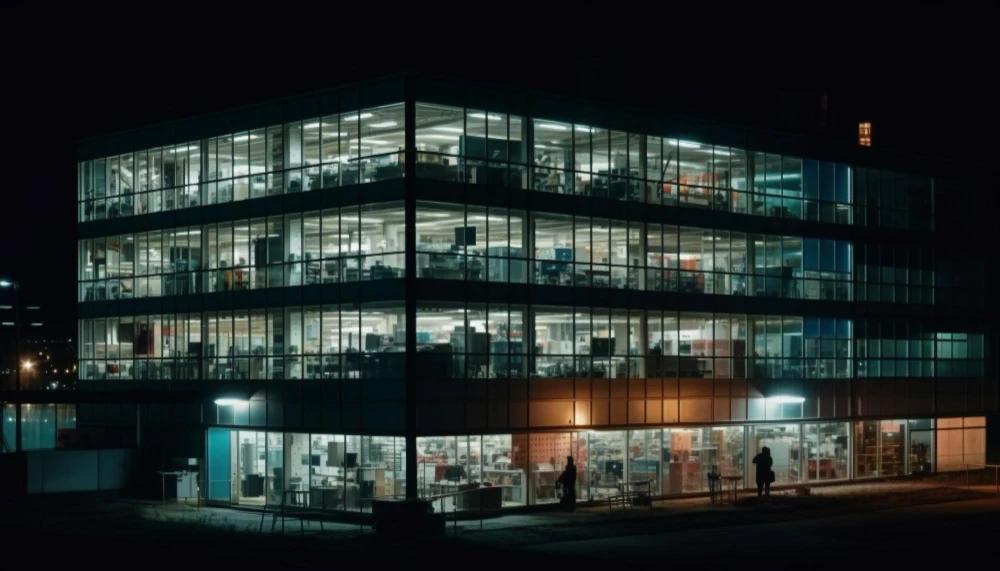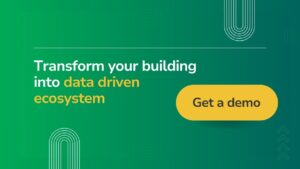Energy democracy is an idea that can help us tackle the environmental crisis we are facing. It is based on the principles of environmental justice and aims to change our relationship with energy. The goal is to make energy production, management, and sharing more sustainable and equitable. This means that the community should own energy infrastructure, systems should be decentralized, and more people should participate in energy policy decisions.
Today, buildings are responsible for 40% of global carbon emissions, so we need to find ways to build more sustainably. This is where Sensgreen comes in. Sensgreen makes building data accessible and easy to use. Sensgreen’s mission is to make the tools required for this revolution available to everyone, not just to a privileged few.
The Existing Gap of Decarbonization in Diverse Building Types
Making buildings more environmentally friendly is a complex challenge that affects a wide range of structures. Residential buildings that are old and outdated, small businesses with limited financial resources, and rural schools without modern technology and funding all face obstacles. Even community centers, which are important for local neighborhoods, struggle with budget limitations that prevent them from making green advancements.
Historical buildings pose a unique challenge because they’re subject to preservation regulations that prohibit modern retrofitting. Affordable housing projects are also important for community support but often have to forego energy-efficient designs due to cost constraints. Manufacturing facilities, warehouses, small hotels and inns in remote locations also require significant upgrades to meet modern energy standards.
Religious institutions and rural healthcare facilities face similar challenges because they operate with minimal resources, making energy upgrades a distant thought. Each building type represents a specific facet of the broader challenge in decarbonization.
Sensgreen’s mission is to democratize access to energy efficiency and decarbonization technologies. Our approach is designed to cater to a wide range of buildings that form the backbone of communities worldwide. Sensgreen’s solutions are inclusive, ensuring that all buildings, regardless of their age, type, or financial backing, can contribute to a greener, more sustainable future.
Sensgreen’s Approach to Democratization
Wireless Automation Technologies: Make Digitalization Possible For Every Building
At the heart of Sensgreen’s democratization approach lies our innovative use of wireless automation technologies, particularly leveraging LoRaWAN (Long Range Wide Area Network) technology. This choice is instrumental in facilitating quick and non-invasive digitalization of diverse building types. By employing LoRaWAN, Sensgreen significantly simplifies the retrofitting process. The typical challenges and disruptions associated with cable laying for sensor installations are eliminated, making the transition to smart buildings seamless and less intrusive.
Our LoRaWAN-enabled sensors are designed for longevity, boasting battery runtimes of up to 10 years, which translates to low-maintenance and hassle-free operation over the long term. This robust technology is not limited to basic monitoring; it extends to a comprehensive range of applications. We incorporate LoRaWAN energy meters, indoor air quality sensors, and occupancy sensors, alongside crucial control elements like air conditioner controllers, light controllers, thermostats, and radiator valves.
The integration of these wireless controllers into the Sensgreen Smart Building Platform allows for an unprecedented level of building control. Even structures without smart infrastructure can quickly transform into responsive, intelligent environments. This ease of installation and operation opens the door for a wide array of buildings, from rural educational institutions to historic urban centers, to participate actively in energy efficiency and decarbonization efforts.
AI-Powered Management: Making Energy Efficiency Accessible to All
Sensgreen’s AI-driven approach is not just a technological advancement; it is a paradigm shift in making energy efficiency universally accessible. One of the most significant barriers to implementing energy-efficient technologies in various buildings, especially those without large IT or facility management teams, is the perceived complexity and manpower required for monitoring and management. Our AI-powered solutions directly address this challenge.
The AI algorithms at the core of Sensgreen’s platform are designed for ease of use and automated efficiency. They take over the heavy lifting of data analysis, removing the need for extensive technical staff. By processing the data from our LoRaWAN-enabled sensors, these algorithms provide actionable insights and automated control over energy consumption and HVAC systems. This automation is crucial for buildings that lack the manpower for constant monitoring and manual adjustments.
For instance, implementing traditional energy-efficient solutions could be overwhelming or simply unfeasible in a small school or a community center with limited staff. Sensgreen changes this narrative. Our AI system autonomously adjusts settings based on real-time data, optimizing energy use without the need for constant human intervention. This means even buildings with minimal staff can maintain optimal environmental conditions while contributing to energy savings and sustainability goals.
Moreover, the predictive maintenance capabilities of our AI solutions minimize the need for on-site technical troubleshooting, further reducing the manpower required for building maintenance. This feature is particularly beneficial for buildings in remote or rural areas, where access to technical expertise might be limited.
In essence, Sensgreen’s AI-powered management democratizes the application of energy efficiency technologies. It ensures that buildings of all sizes and with varying staffing levels can benefit equally from advanced energy management, making sustainable practices a viable option for everyone, not just the few with extensive resources.
Sensgreen’s Role in COP28 and Our Global Mission
Sensgreen has a mission to provide sustainable solutions for the environment. This aligns with the goal of COP28, the 28th Conference of the Parties to the United Nations Framework Convention on Climate Change. COP28 is a significant event in the environmental landscape, and Sensgreen’s participation shows their commitment to driving change in building energy efficiency and decarbonization.
Buildings play a crucial role in the battle against climate change, and Sensgreen understands this. Their attendance at COP28 is an opportunity to contribute to a global conversation on sustainable practices and learn from other leaders in the field. They aim to highlight the importance of democratizing energy efficiency and decarbonization technologies for all building types, regardless of their size, location, or financial backing.
Sensgreen’s innovative solutions, powered by AI and wireless automation technologies, are their contribution to a world where energy efficiency is the norm and every building plays a role in reducing global carbon emissions. We believe that every building has the potential to support a more equitable and sustainable future. We pledge to continue this mission by collaborating with global partners at COP28. Additionally, Sensgreen’s active involvement in COP28 underscores their dedication to fostering a sustainable future and advancing the dialogue on environmental responsibility.



